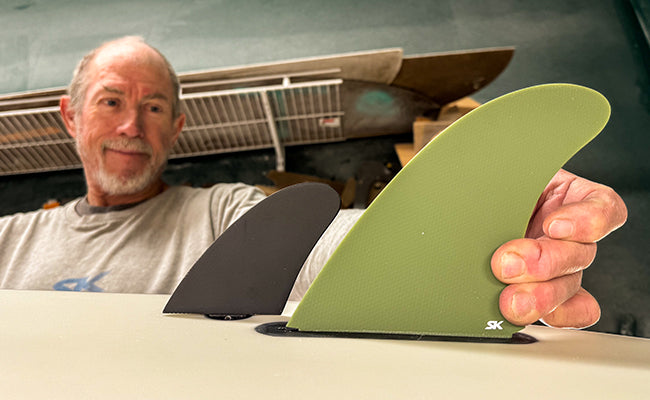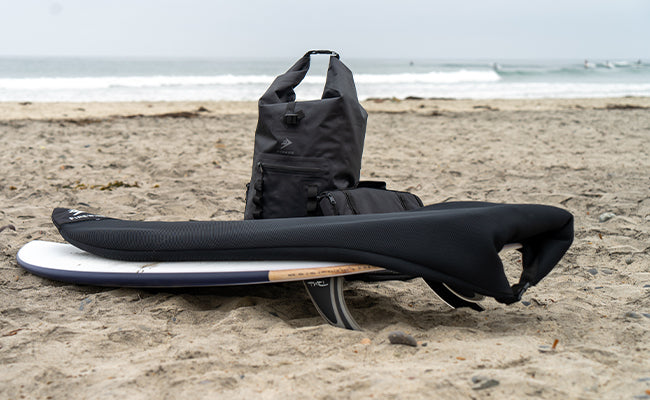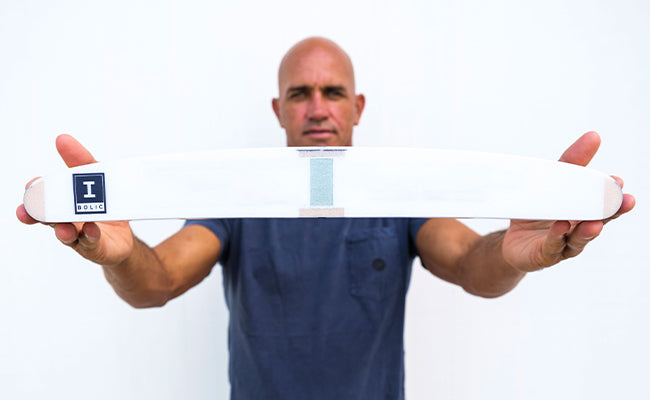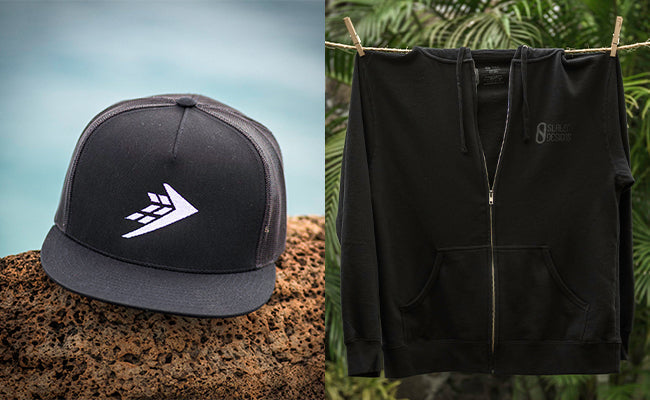Our surfboards push the boundaries in construction and materials, in both sustainability and performance - but they're still surfboards. Generally speaking, what you know about other surfboards will still apply to ours, read on for our recommended surfboard care.
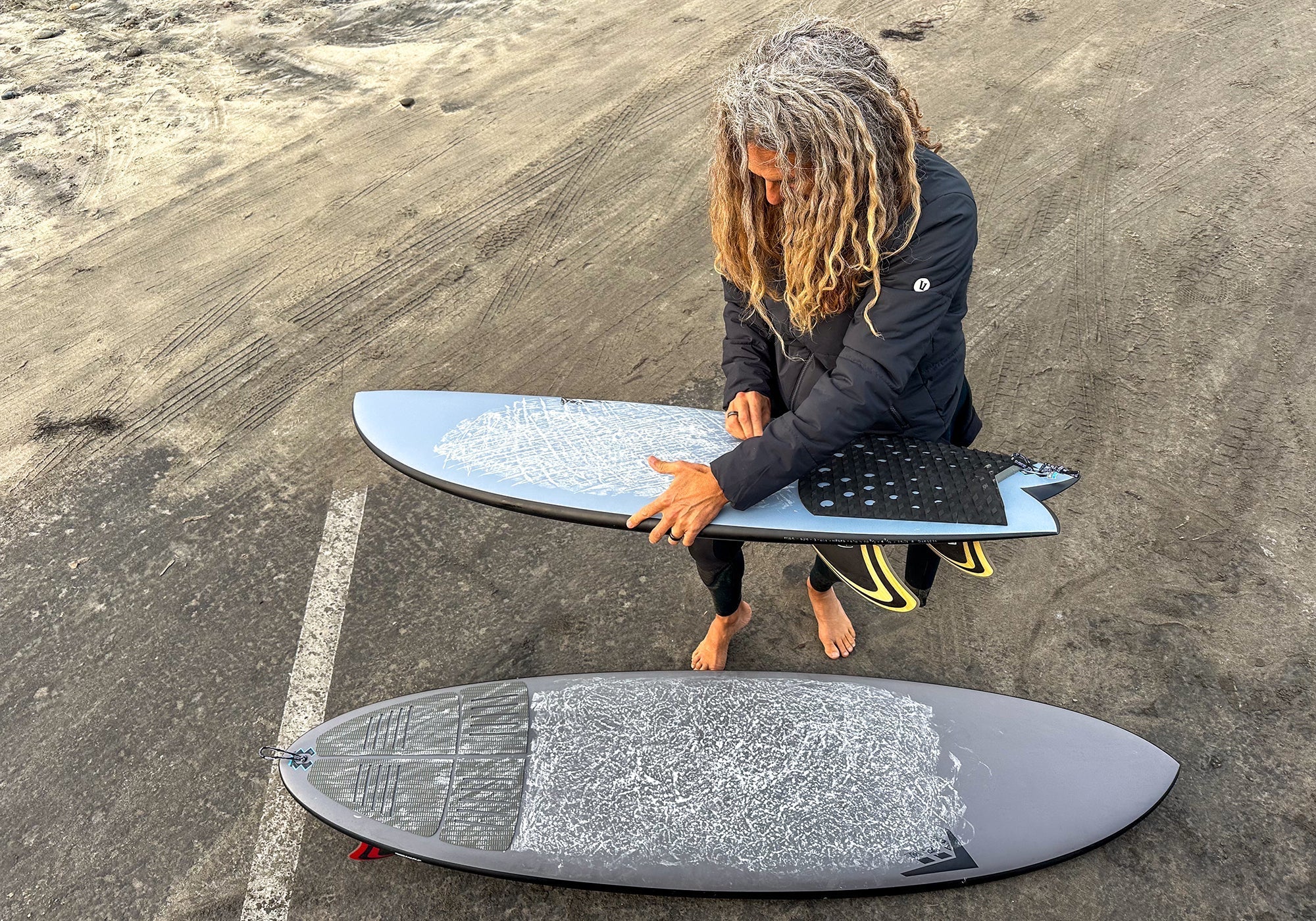
Our recommended
Quiver maintenance
Surfboards are some of the most important objects in our lives, and aren't cheap - a little love goes a long way to ensure your gear performs as new for as long as possible.
1. Rinse and repeat
Rinse and dry your surfboard after each surf (including fin boxes) - salt is incredibly corrosive.
2. Cool + dark
Store your boards in a cool and dark location, inside board bags or board socks for safest keeping. High temperatures and UV sunlight are all elements that can deteriorate your board.
3. Keep it clean
Don't carry dings or bad wax for long, best to address those as they come up.

Stay in the shade
The sun is a killer
Nothing's stronger than the sun, both its harmful UV rays and heat will damage your surfboard. Best to find a shaded, cool place to rest or store your board (throw a towel on your board if shade is nowhere to be found). And always use sunscreen!

Be prepared
Car travel logistics
Most of us travel to and from the surf in cars, so it's important to plan ahead.
Easier + safer = inside
Some surfboards won't fit inside your vehicle, but whenever possible, this is the safest method for traveling with a board by car. When necessary, use roof racks you trust with a board bag, and be sure to tie down securely.
Watch out for wax
Be mindful that your wax may melt while in the car, so protect your seats and belongings.
Bring it indoors
Never leave your hot surfboard in a hot car or on the roof. Your board may become too hot and could delaminate, a process that could happen in a short time on a hot summer day. Take the extra few minutes to bring your board inside, even if it's only for an hour (some of our staff will bring board bags into their offices daily).

Plan ahead
Use a bag
From international air travel to long-term storage, board bags are your surfboards' best friend and is a critical step in protecting your surfboard.
- For daily use, soft board socks are our recommended bag type because they are breathable and non-polypropylene.
- For travel, make sure to use a certified travel bag that is well-padded and has locking zippers.
Padded bags are best for protection and durability (5mm or thicker), for use in general storage, travel or use on a roof rack, but be sure to find a breathable one and always rinse your board clean of salt and sand before putting inside a board bag.
When traveling, make sure to keep your fins separate and outside of your board bag so they do not cause damage to your boards while in transit.
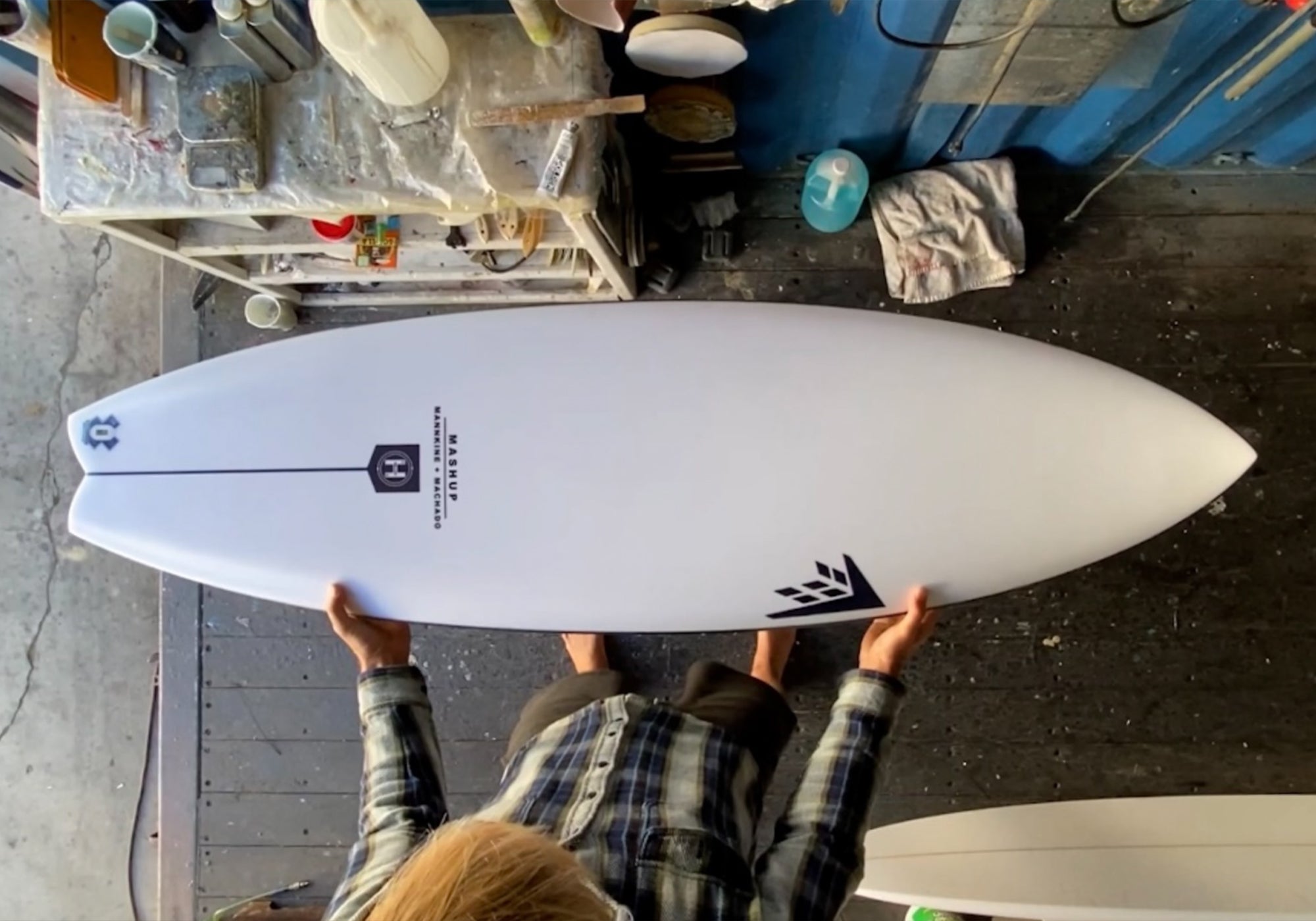
how to
Clean your board
Everyone likes a clean, fresh board - but not all cleaning supplies will work.
How to remove wax
Never use harsh chemicals or metal tools to remove wax, always use a plastic wax comb or scraper. Warm wax is always easier to remove, so put your board in the sun for a few minutes (being mindful of how strong the sun is) to warm it up. If the sun isn't an option, a hairdryer will work, but be mindful of how close you hold the hairdryer to the board. To get every single speck of wax off your board, you can use a "Wax Pickle" style product, or rub flour on the surface of your board.
How to clean your board
First, follow steps above to remove wax. Then use a mild cleaning product (citrus-based or environmentally-friendly) for a finishing shine, using a towel or paper towel to apply.
Never use chemical solvents such as methylated spirits, turpentine, or paint thinner, as these can break down the resin and cause damage to the surface and finish of the board in the form of discoloration, deterioration, or delamination, especially if the solvents enter the board via cracks, shatters or pin holes.
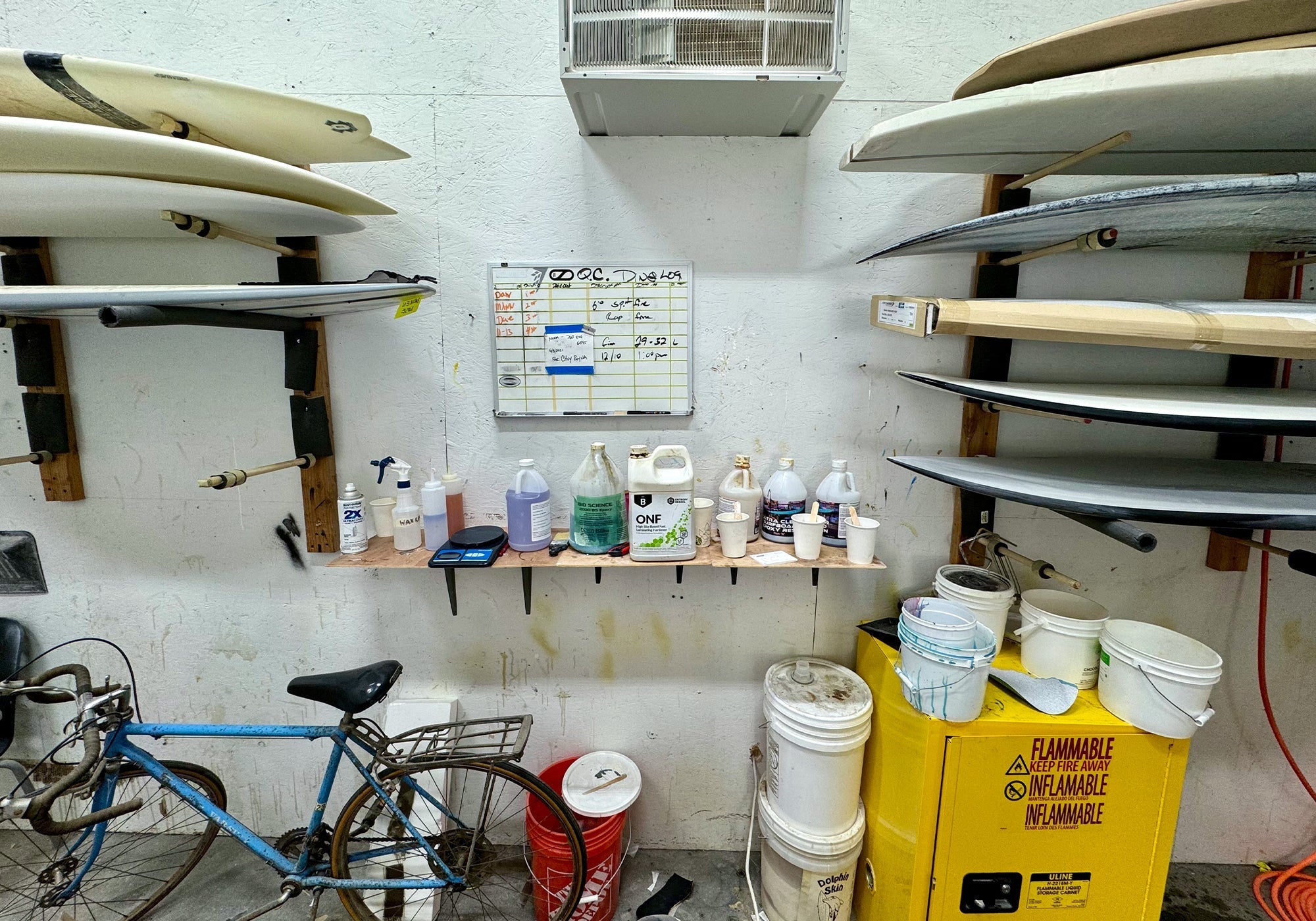
Never use polyester resin
Repairs & Materials
Our entire range is made with more sustainable materials than typical surfboards, but can be repaired with standard surfboard building supplies. We use bio-based epoxy resin and EPS-based foams.
Do not use polyester resin or polyester ding repair on our boards, you will cause damage. Use standard fiberglass cloth and epoxy resin or epoxy ding repair, and be sure to get professional help if you're not confident in your repair abilities.

Protect your investment
Don't ride a damaged board
We recommend you never ride a damaged board in the water, to protect the condition and performance of your board and also respect the environment. If you're in the water and your board gets damaged, water will seep into your board and could start to saturate the core and cause damage to the lamination.

Don't forget about
Fin care
Like your surfboard, you'll want to make sure to rinse your fins after every session, and keep them clean and water tight. If you need to repair them, you can use standard epoxy resin and fiberglass cloth.
If you need help getting your fins into tight fin boxes, try applying some wax to the base and sides of the base of your fins before inserting.


